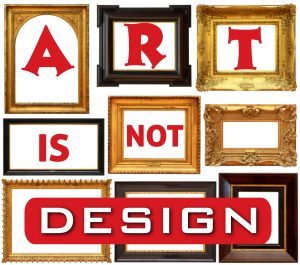 Clients new to buying graphic design are often confused about what they should expect from the work they’re buying. Sometimes all they have is a vague notion that they’re going to get little pictures about what they sell, and that these pictures should be attractive so people will look at them. They tend to associate this process with art, and may think that design and art are the same thing.
Clients new to buying graphic design are often confused about what they should expect from the work they’re buying. Sometimes all they have is a vague notion that they’re going to get little pictures about what they sell, and that these pictures should be attractive so people will look at them. They tend to associate this process with art, and may think that design and art are the same thing.
This is understandable since both art and design are visual. But their functions are completely different.
When asked some years ago what the difference was, Milton Glaser (an icon of contemporary design) said something like this: the function of art is to intensify one’s perception of reality and create new languages of meaning. But the function of design is to communicate, and for that we must use known symbols.
Coming from a fine art academic background, I had been trying to figure out how art and design are related. I now had my answer. It has helped me understand the difference between artistic goals and design goals, and that I will be both a better artist and a better designer by staying clear about which is which and not confusing them.
This understanding has also kept me from becoming one of those dreaded stereotypes of the commercial art world: prima donna designers who disregard their clients’ ideas, insist they know best, and work in the vacuum of their own ego. To them I say: Listening to your client is not a sell-out. It’s the only way you can create effective work. Work that is not effective is a failure, no matter how cool it is.
Here’s my take: it is the job of graphic design to combine words and pictures to create an image that will inspire a particular behavior. Specifically, I am supposed to create communications that will motivate people to behave in ways that benefits my clients. Usually that means “Buy my stuff.” It can also mean “Donate to my social cause” or “Vote for me.” What designers REALLY do is nothing more nor less than behavior modification. (Designers are all closet Skinnerian psychologists)
I have found that this viewpoint helps clients understand what they are really buying, and gives them a benchmark for evaluating its usefulness. This in turn helps me do better work because they are able to give me better direction.
